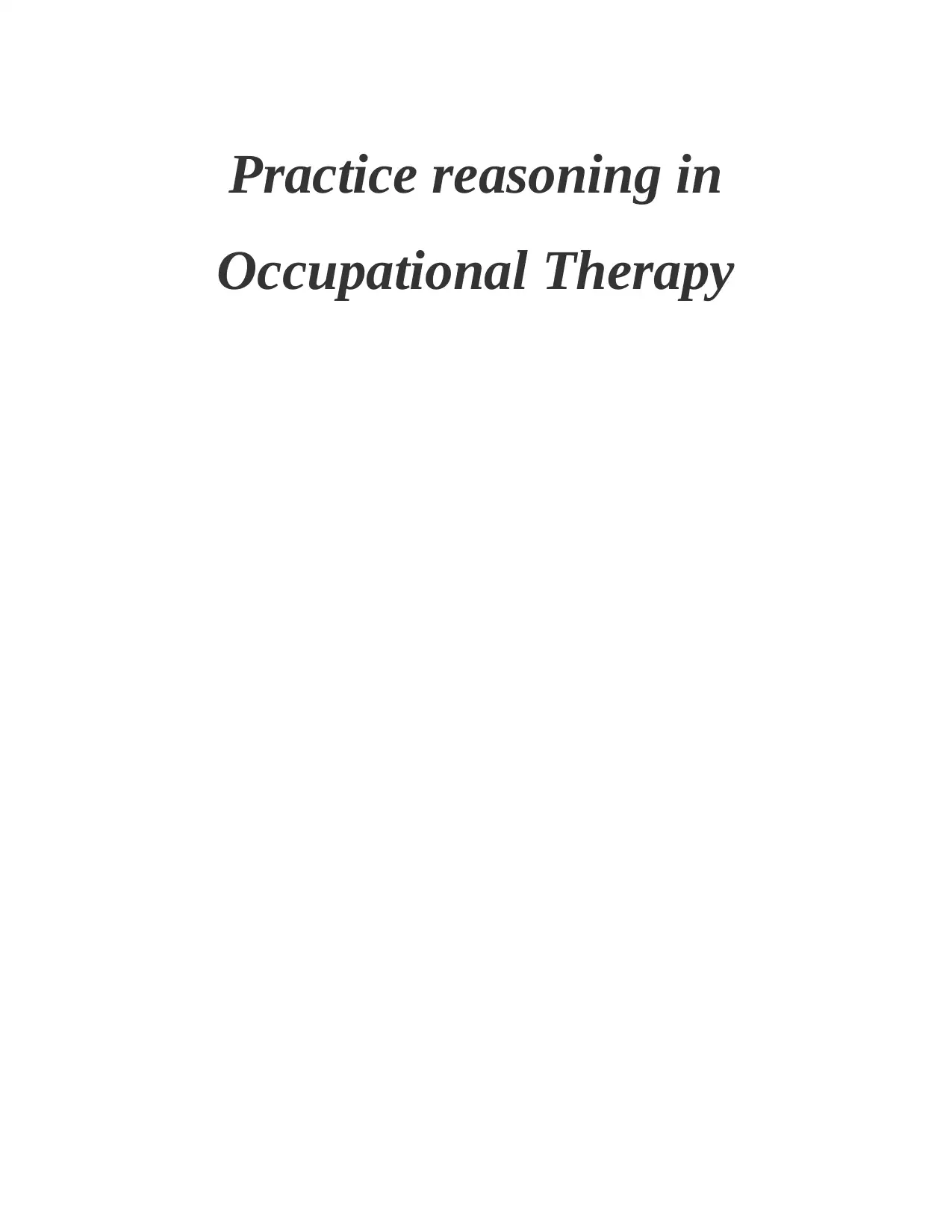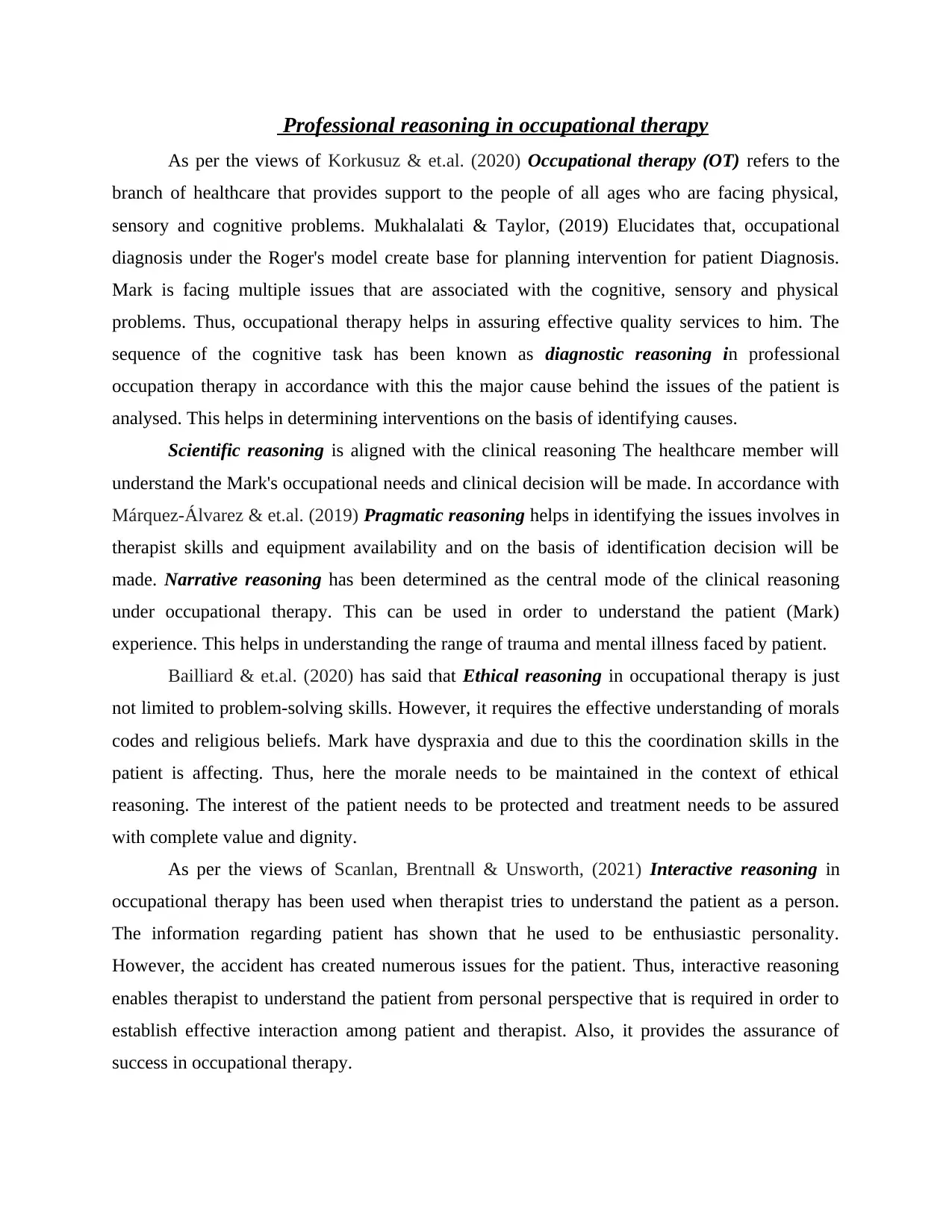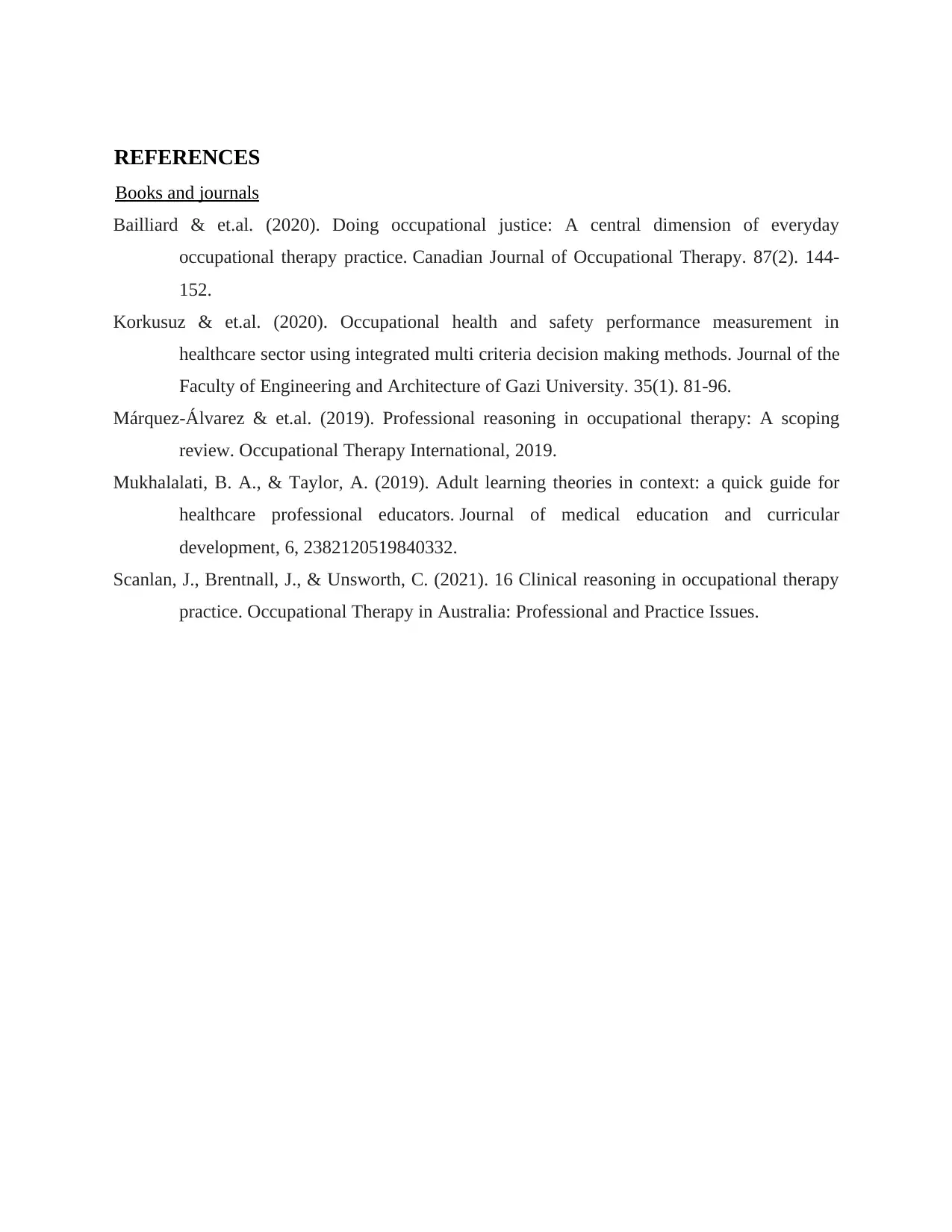Assessment 3: Professional Reasoning Framework in Occupational Therapy
VerifiedAdded on 2023/06/10
|6
|629
|241
Report
AI Summary
This report analyzes the application of professional reasoning within occupational therapy, using Mark's case as a focal point. It delves into various facets of clinical reasoning, including diagnostic, scientific, pragmatic, narrative, ethical, and interactive approaches. The report references key literature and frameworks, such as the Canadian Practice Process Framework (CPPF), to illustrate how occupational therapists can assess and intervene in complex cases involving cognitive, sensory, and physical challenges. The case study highlights the importance of understanding a patient's personal history, values, and experiences to tailor effective treatment plans. The report also emphasizes the ethical considerations and the need for therapists to maintain patient dignity while addressing the impact of conditions like dyspraxia on coordination and overall well-being. Overall, this report provides a comprehensive overview of how different reasoning approaches are integrated to provide effective occupational therapy services.
1 out of 6










![[object Object]](/_next/static/media/star-bottom.7253800d.svg)